-

新人教版高中英语选修2Unit 2 Learning about Language教学设计
The activity theme of this section is to design various activities around the key words in the first text. Therefore, the activities require students to pay attention to the spelling of words. On the other hand, let students grasp the meaning of words more accurately through sentences and short texts. This kind of teaching design also helps to improve the ability of using English thinking.1. Cultivating students' ability to use word formation to induce and memorize vocabulary, and the ability to use lexical chunks to express meaning.2. Guide the students to think independently and use the correct form of words to complete sentences3. Cultivate students' habit of using lexical chunks to express language completely, guide students to draw words in sentences quickly, pay attention to word collocation, so as to accumulate more authentic expressions4. Instruct students to create sentences with the chunks.1. Enable students to use the language points in the real situation or specific contexts flexibly and appropriately.2. Guiding the Ss to use unit topic words and the sentence patterns in a richer context.Step1: Think of a word that best fits each definition.1. to remember sth2.to accept, admit, or recognize sth or the truth/existence of sth3. the process of changing sth or yourself to suit a new situation4 .to make sb feel less worried or unhappy5. a strong desire to achieve sth

新人教版高中英语选修2Unit 5 Reading for writing教学设计
你校英语报计划出版一期急救常识专刊,现面向全校学生公开征集稿件,你有意参加。请你根据下面提示内容,用英语写一篇短文,介绍在车祸现场对伤者进行急救的方法和步骤。1.确保现场的安全;2.询问伤者,确保其呼吸正常;3.检查伤口,如流血则应采取止血措施;4.如需急救,确保其处于康复位置。注意:1.词数80左右;2.可以适当增加细节,以使行文连贯。参考词汇:康复位置 recovery positionAs we all know, having a knowledge of first aid can make a great difference in our daily life. If a traffic accident happens and someone is injured, the following steps can be used to treat the injured.In the first place, we should make sure that the accident scene is safe so that we won’t get hurt. We should ask the injured person if he is OK, and see if he is breathing. What’s more, we should check for cuts and wounds. If he is bleeding badly, it is vital that we should try to stop the bleeding by applying pressure to the injury. This is because if a person loses too much blood, he may die. If necessary, take the injured person to the hospital as soon as possible.Do remember: when giving first aid, please be sure to place the person in a recovery position.

新人教版高中英语选修2Unit 3 Reading for writing教学设计
The theme of this part is to write an article about healthy diet. Through reading and writing activities, students can accumulate knowledge about healthy diet, deepen their understanding of the theme of healthy diet, and reflect on their own eating habits. This text describes the basic principles of healthy diet. The author uses data analysis, definition, comparison, examples and other methods. It also provides a demonstration of the use of conjunctions, which provides important information reference for students to complete the next collaborative task, writing skills, vivid language materials and expressions.1. Teach Ss to learn and skillfully use the new words learned from the text.2. Develop students’ ability to understand, extract and summarize information.3. Guide students to understand the theme of healthy diet and reflect on their own eating habits.4. To guide students to analyze and understand the reading discourse from the aspects of theme content, writing structure, language expression, etc., 5. Enable Ss to write in combination with relevant topics and opinions, and to talk about their eating habits.1. Guide students to analyze and understand the reading discourse from the aspects of theme content, writing structure, language expression, etc.2. Enable them to write in combination with relevant topics and opinions, and to talk about their eating habits.3. Guide the students to use the cohesive words correctly, strengthen the textual cohesion, and make the expression fluent and the thinking clear.Step1: Warming upbrainstorm some healthy eating habits.1.Eat slowly.2.Don’t eat too much fat or sugar.3.Eat healthy food.4.Have a balanced diet.Step2: Read the passage and then sum up the main idea of each paragraph.

新人教版高中英语选修2Unit 2 Reading for writing教学设计
The theme of this section is to express people's views on studying abroad. With the continuous development of Chinese economic construction, especially the general improvement of people's living standards, the number of Chinese students studying abroad at their own expense is on the rise. Many students and parents turn their attention to the world and regard studying abroad as an effective way to improve their quality, broaden their horizons and master the world's advanced scientific knowledge, which is very important for the fever of going abroad. Studying abroad is also an important decision made by a family for their children. Therefore, it is of great social significance to discuss this issue. The theme of this section is the column discussion in the newspaper: the advantages and disadvantages of studying abroad. The discourse is about two parents' contribution letters on this issue. They respectively express their own positions. One thinks that the disadvantages outweigh the advantages, and the other thinks that the advantages outweigh the disadvantages. The two parents' arguments are well founded and logical. It is worth noting that the two authors do not express their views on studying abroad from an individual point of view, but from a national or even global point of view. These two articles have the characteristics of both letters and argumentative essays1.Guide the students to read these two articles, and understand the author's point of view and argument ideas2.Help the students to summarize the structure and writing methods of argumentative writing, and guides students to correctly understand the advantages and disadvantages of studying abroad3.Cultivate students' ability to analyze problems objectively, comprehensively and deeply

新人教版高中英语选修2Unit 4 Learning about Language教学设计
This section guides students to pay attention to the typical context of vocabulary use, helps students accumulate vocabulary around the key vocabulary of this unit, and uses the learned words and word chunks in different contexts to deeply understand their meaning and usage, so as to achieve the purpose of review and consolidation.The teaching design activities aim to guide students to pay attention to the typical context in which the target vocabulary is used, as well as the common vocabulary used in collocation, so that students can complete the sentence with correct words. In terms of vocabulary learning strategies, this unit focuses on cultivating students' ability to pay attention to collocation of words and to use word blocks to express meaning.For vocabulary learning, it is not enough just to know the meaning of a single word, but the most important thing is to master the common collocations of words, namely word blocks.Teachers should timely guide students to summarize common vocabulary collocation, such as verb and noun collocation, verb and preposition collocation, preposition and noun collocation, and so on.1. Guide students to understand and consolidate the meaning and usage of the vocabulary in the context, 2. Guide the students to use the unit topic vocabulary in a richer context3. Let the students sort out and accumulate the accumulated vocabulary, establishes the semantic connection between the vocabulary,4. Enable students to understand and master the vocabulary more effectivelyGuiding the Ss to use unit topic words and the sentence patterns in a richer context.

新人教版高中英语选修2Unit 4 Reading for writing教学设计
假定你是英国的Jack,打算来中国旅行,请你给你的中国笔友李华写一封信,要点如下:1.你的旅行计划:北京→泰山→杭州;2.征求建议并询问他是否愿意充当你的导游。注意:1.词数80左右(开头和结尾已给出,不计入总词数);2.可以适当增加细节,以使行文连贯。参考词汇:故宫 the Forbidden City;泰山 Mount TaiDear Li Hua,I'm glad to tell you that 'm going to visit China.First,I am planning to visit Beijing,the capitalof China,where I am looking forward to enjoying the Great Wall,the Forbidden City and somebeautiful parks.Then I intend to go to visit Mount Tai in Shandong Province.I've heard that it is one ofthe most famous mountains in China and I can't wait to enjoy the amazing sunrise there.After that,I amalso going to Hangzhou.It is said that it is a beautiful modern city with breathtaking natural sights,among which the West Lake is a well- known tourist attraction.What do you think of my travel plan? Will you act as my guide? Hope to hear from you soon.

新人教版高中英语选修2Unit 4 Using langauge-Listening教学设计
The theme of the listening section is " talking about scenery and culture along a journey."The part is designed to further lead the students to understand Canadian natural geography and social environment, and integrated into the cultural contrast by mentioning the long train journey from Beijing to Moscow routes. On this basis, the part activates students related travel experience, lets the student serial dialogue, guides the student to explore further the pleasure and meaning of the long journey, and Chinese and foreign cultural comparison.The part also provides a framework for the continuation of the dialogue, which is designed to provide a framework for students to successfully complete their oral expressions, and to incorporate an important trading strategy to end the dialogue naturally.1. Help students to understand and master some common English idioms in the context, and experience the expression effect of English idioms.2. Guide the students to understand the identity of different people in the listening context, and finish the dialogue according to their own experience.3. Instruct the students to use appropriate language to express surprise and curiosity about space and place in the dialogue, and master the oral strategy of ending the dialogue naturally.1. Instruct students to grasp the key information and important details of the dialogue.2. Instruct students to conduct a similar talk on the relevant topic.

新人教版高中英语选修2Unit 5 Learning about Language教学设计
The purpose of this section of vocabulary exercises is to consolidate the key words in the first part of the reading text, let the students write the words according to the English definition, and focus on the detection of the meaning and spelling of the new words. The teaching design includes use English definition to explain words, which is conducive to improving students' interest in vocabulary learning, cultivating their sense of English language and thinking in English, and making students willing to use this method to better grasp the meaning of words, expand their vocabulary, and improve their ability of vocabulary application. Besides, the design offers more context including sentences and short passage for students to practice words flexibly.1. Guide students to understand and consolidate the meaning and usage of the vocabulary in the context, 2. Guide the students to use the unit topic vocabulary in a richer context3. Let the students sort out and accumulate the accumulated vocabulary, establishes the semantic connection between the vocabulary,4. Enable students to understand and master the vocabulary more effectivelyGuiding the Ss to use unit topic words and the sentence patterns in a richer context.Step1: Read the passage about chemical burns and fill in the blanks with the correct forms of the words in the box.

新人教版高中英语选修2Unit 5 Reading and thinking教学设计
The theme of this activity is to learn the first aid knowledge of burns. Burns is common in life, but there are some misunderstandings in manual treatment. This activity provides students with correct first aid methods, so as not to take them for granted in an emergency. This section guides students to analyze the causes of scald and help students avoid such things. From the perspective of text structure and collaborative features, the text is expository. Expository, with explanation as the main way of expression, transmits knowledge and information to readers by analyzing concepts and elaborating examples. This text arranges the information in logical order, clearly presents three parts of the content through the subtitle, accurately describes the causes, types, characteristics and first aid measures of burns, and some paragraphs use topic sentences to summarize the main idea, and the level is very clear.1. Guide students to understand the causes, types, characteristics and first aid methods of burns, through reading2. Enhance students’ ability to deal withburnss and their awareness of burns prevention3. Enable students to improve the ability to judge the types of texts accurately and to master the characteristics and writing techniques of expository texts.Guide students to understand the causes, types, characteristics and first aid methods of burns, through readingStep1: Lead in by discussing the related topic:1. What first-aid techniques do you know of ?CPR; mouth to mouth artificial respiration; the Heimlich Manoeuvre

新人教版高中英语选修2Unit 5 Using langauge-Listening教学设计
The theme of this section is to learn how to make emergency calls. Students should learn how to make emergency calls not only in China, but also in foreign countries in English, so that they can be prepared for future situations outside the home.The emergency telephone number is a vital hotline, which should be the most clear, rapid and effective communication with the acute operator.This section helps students to understand the emergency calls in some countries and the precautions for making emergency calls. Through the study of this section, students can accumulate common expressions and sentence patterns in this context. 1.Help students accumulate emergency telephone numbers in different countries and learn more about first aid2.Guide the students to understand the contents and instructions of the telephone, grasp the characteristics of the emergency telephone and the requirements of the emergency telephone.3.Guide students to understand the first aid instructions of the operators.4.Enable Ss to make simulated emergency calls with their partners in the language they have learned1. Instruct students to grasp the key information and important details of the dialogue.2. Instruct students to conduct a similar talk on the relevant topic.Step1:Look and discuss:Match the pictures below to the medical emergencies, and then discuss the questions in groups.
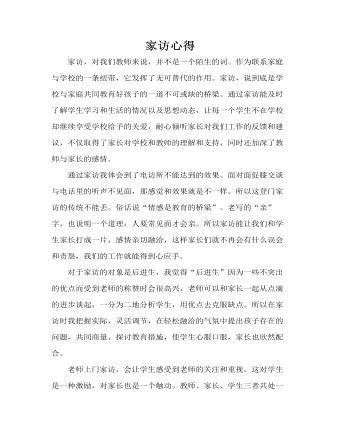
教师家访心得体会
通过家访我体会到了电访所不能达到的效果。面对面促膝交谈与电话里的听声不见面,那感觉和效果就是不一样。所以这登门家访的传统不能丢。俗话说“情感是教育的桥梁”。老写的“亲”字,也说明一个道理:人要常见面才会亲。所以家访能让我们和学生家长打成一片,感情亲切融洽,这样家长们就不再会有什么误会和责怨,我们的工作就能得到心应手。
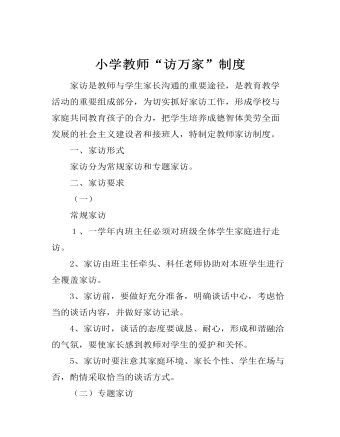
小学教师“访万家”制度
一、家访形式 家访分为常规家访和专题家访。 二、家访要求 (一) 常规家访 1、一学年内班主任必须对班级全体学生家庭进行走访。 2、家访由班主任牵头、科任老师协助对本班学生进行全覆盖家访。
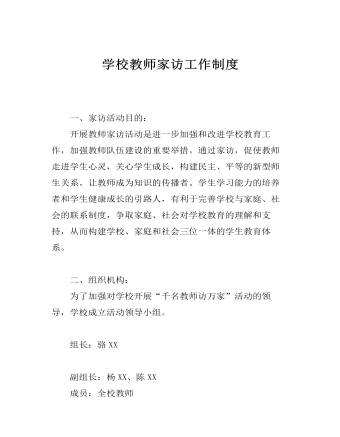
学校教师家访工作制度
二、组织机构: 为了加强对学校开展“千名教师访万家”活动的领导,学校成立活动领导小组。 组长:骆XX 副组长:杨XX、陈XX 成员:全校教师 三、家访内容: 、积极向学生家长宣传《中共中央、国务院关于进一步加强和改进未成年人思想道德建设的若干意见》和教育部新颁布的《中小学生守则》及《中小学生日常行为规范》及其它教育法律、法规和各项政策。 2、向家长全面客观地反映学生在校的表现,了解学生家庭教育情况,介绍正确的教育子女方法,配合家长有针对性地进行教育,并听取家长对学校教育的意见和建议,增强家长配合学校共同教育子女的责任感。 3、指导家长合理安排孩子的节、假日生活,加强对孩子的管理,教育孩子不进入网吧等未成年人不宜入内的场所,注意防火灾、防溺水、防触电、防盗窃、防中毒,确保孩子身心健康和生命安全。
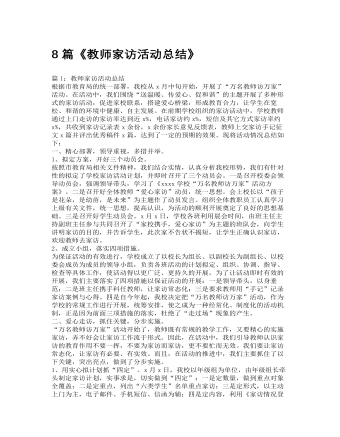
8篇《教师家访活动总结》
篇1:教师家访活动总结根据市教育局的统一部署,我校从x月中旬开始,开展了“万名教师访万家”活动。在活动中,我们围绕“送温暖、传爱心、促和谐”的主题开展了多种形式的家访活动,促进家校联系,搭建爱心桥梁,形成教育合力,让学生在宽松、和谐的环境中健康、自主发展。在前期学校组织的家访活动中,学校教师通过上门走访的家访率达到近x%,电话家访约x%,短信及其它方式家访率约x%,共收到家访记录表x余份,x余份家长意见反馈表,教师上交家访手记征文x篇并评出优秀稿件x篇,达到了一定的预期的效果。现将活动情况总结如下:一、精心部署,领导重视,多措并举。1、拟定方案,开好三个动员会。按照市教育局相关文件精神,我们结合实情,认真分析我校形势,我们有针对性的拟定了学校家访活动计划,并即时召开了三个动员会。一是召开校委会领导动员会,强调领导带头,学习了《xxxx学校“万名教师访万家”活动方案》。二是召开好全体教师“爱心家访”动员,统一思想。会上校长以“孩子是花朵,是幼苗,是未来”为主题作了动员发言。组织全体教职员工认真学习上级有关文件,统一思想,提高认识,为活动的顺利开展奠定了良好的思想基础。三是召开好学生动员会。x月x日,学校各班利用晨会时间,由班主任主持副班主任参与共同召开了“家校携手,爱心家访”为主题的班队会,向学生讲明家访的目的,并告诉学生,此次家不告状不揭短,让学生正确认识家访,欢迎教师去家访。2、成立小组,落实四项措施。为保证活动的有效进行,学校成立了以校长为组长、以副校长为副组长、以校委会成员为成员的领导小组,负责各班活动的计划拟定、组织、协调、指导、检查等具体工作,使活动得以更广泛、更持久的开展。为了让活动即时有效的开展,我们主要落实了四项措施以保证活动的开展:一是领导带头,以身垂范;二是班主任携手科任教师,让家访常态化;三是要求教师用“手记”记录家访案例与心得。四是自今年起,我校决定把“万名教师访万家”活动,作为学校的常规工作进行开展,统筹安排,使之成为一种经常化、制度化的活动机制,正是因为前面三项措施的落实,杜绝了“走过场”现象的产生。二、爱心走访,抓住关键,分步实施。“万名教师访万家”活动开始了,教师既有常规的教学工作,又要精心的实施家访,弄不好会让家访工作流于形式。因此,在活动中,我们引导教师认识家访的教育作用不要一挥,不要为家访而家访,更不要忙而无效。我们要让家访常态化,让家访有必要、有实效。而且,在活动的推进中,我们主要抓住了以下关键,突出亮点,做到了分步实施。1、用实心拟计划抓“四定”。x月x日,我校以年级组为单位,由年级组长牵头制定家访计划,实事求是,切实做到“四定”:一是定数量,做到重点对象全覆盖;二是定重点,列出“六类学生”名单重点家访;三是定形式,以主动上门为主,电子邮件、手机短信、信函为辅;四是定内容,利用《家访情况登记表》为每一个学生建立详细档案。
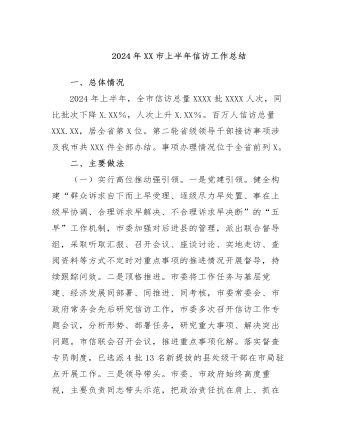
2024年XX市上半年信访工作总结
三、下步工作(一)守牢基层化解“主阵地”,竭力遏上行。深入开展矛盾纠纷排查化解,有效减少矛盾积累、问题上行、风险外溢。发挥常态化安保指挥部作用,对风险隐患进行预警和化解处置。(二)打好规范办理“主动仗”,全面提质效。对事项按照“十步法”,落实“三到位”,切实形成闭环,防止初转重。建立国家局登记求决类初件包保机制,确保程序性办结和实质性化解。对重复事项要溯源复盘,摸清缘由经过、主要诉求、政策依据、症结难点等,力争化解,防止重转积。对不满意件、未参评件高度关注,要求责任单位继续做好教育疏导工作,加强督查督办,既督问题解决、也查首办责任,属于失职失责的,提出追责问责建议。(三)啃下积案化解“硬骨头”,确保真解决。从讲政治的高度扛起重点事项化解责任,严格落实专班责任制,实行“一案一策、一人一专班”,找准事项突破口、压缩化解时限,办一件、结一件、了一件,确保事项真化解。
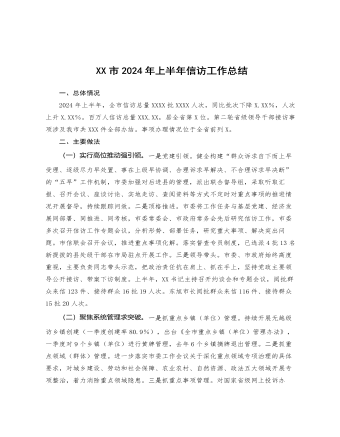
XX市2024年上半年信访工作总结
(一)守牢基层化解“主阵地”,竭力遏上行。深入开展矛盾纠纷排查化解,有效减少矛盾积累、问题上行、风险外溢。发挥常态化安保指挥部作用,对风险隐患进行预警和化解处置。(二)打好规范办理“主动仗”,全面提质效。对事项按照“十步法”,落实“三到位”,切实形成闭环,防止初转重。建立国家局登记求决类初件包保机制,确保程序性办结和实质性化解。对重复事项要溯源复盘,摸清缘由经过、主要诉求、政策依据、症结难点等,力争化解,防止重转积。对不满意件、未参评件高度关注,要求责任单位继续做好教育疏导工作,加强督查督办,既督问题解决、也查首办责任,属于失职失责的,提出追责问责建议。(三)啃下积案化解“硬骨头”,确保真解决。从讲政治的高度扛起重点事项化解责任,严格落实专班责任制,实行“一案一策、一人一专班”,找准事项突破口、压缩化解时限,办一件、结一件、了一件,确保事项真化解。
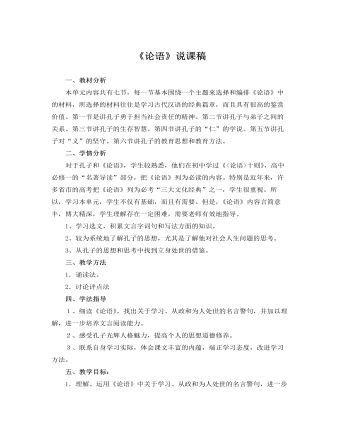
人教版高中语文必修1《论语》说课稿
三、文本中的句子解决完毕,大家对文本内容的理解更加深入了。请速度文本,思考:《论语》具体涉及了哪些方面的内容,体现了孔子什么观点?明确:主要有治学、从政、修身养性和交友治道等方面,体现了孔子“克己复礼”的思想。四、 教师引导学生讨论: 如何评价孔子的言行和观点?从古至今人们对孔子有哪些评价?明确:1、春秋战国时代, 孔子门人及其后学者均推尊孔子。门人中以子贡为代表,他对孔子赞美备至,奉如天人,把孔子比拟为高天、日月、木铎,凡人是永远不可企及的,认为孔子是天生的圣人,“仰之弥高,钻之弥坚”。亚圣孟子认为孔子所行的“圣人之道”是遍及自然界和社会的至高准则。然而当时民间一般看法认为孔子是博学成名的大学者。
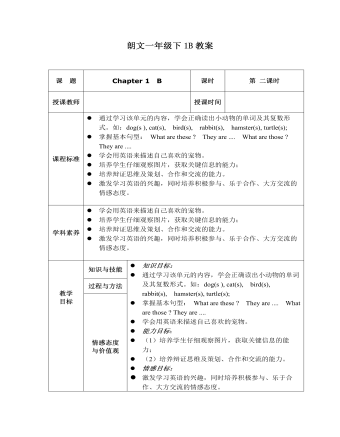
一年级朗文教材下册1B Chapter 1 B
l 通过学习该单元的内容,学会正确读出小动物的单词及其复数形式。如:dog(s ), cat(s), bird(s), rabbit(s), hamster(s), turtle(s);l 掌握基本句型: What are these ? They are .... What are those ? They are ....l 学会用英语来描述自己喜欢的宠物。l 培养学生仔细观察图片,获取关键信息的能力;l 培养辩证思维及策划、合作和交流的能力。l 激发学习英语的兴趣,同时培养积极参与、乐于合作、大方交流的情感态度。
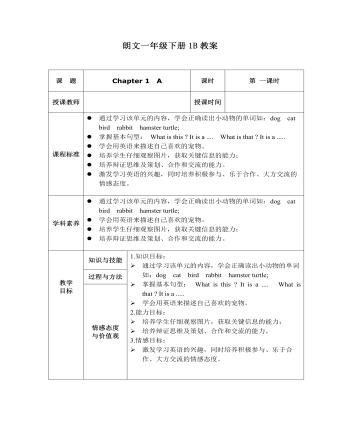
一年级朗文下册1B 教材 Chapter 1 A
l 通过学习该单元的内容,学会正确读出小动物的单词如:dog cat bird rabbit hamster turtle;l 掌握基本句型: What is this ? It is a .... What isthat ? It is a .....l 学会用英语来描述自己喜欢的宠物。l 培养学生仔细观察图片,获取关键信息的能力;l 培养辩证思维及策划、合作和交流的能力。l 激发学习英语的兴趣,同时培养积极参与、乐于合作、大方交流的情感态度。
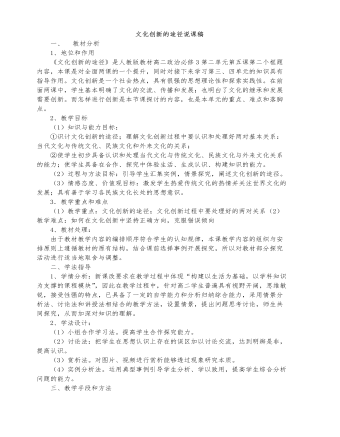
人教版高中政治必修3文化创新的途径说课稿
一、 教材分析1、地位和作用《文化创新的途径》是人教版教材高二政治必修3第二单元第五课第二个框题内容,本课是对全面两课的一个提升,同时对接下来学习第三、四单元的知识具有指导作用。文化创新是一个社会热点,具有很强的思想理论性和探索实践性。在前面两课中,学生基本明确了文化的交流、传播和发展;也明白了文化的继承和发展需要创新。而怎样进行创新是本节课探讨的内容,也是本单元的重点、难点和落脚点。2、教学目标(1)知识与能力目标:①识计文化创新的途径;理解文化创新过程中要认识和处理好两对基本关系:当代文化与传统文化、民族文化和外来文化的关系;②使学生初步具备认识和处理当代文化与传统文化、民族文化与外来文化关系的能力;使学生具备在合作、探究中体验生活、生成认识、构建知识的能力。



